The major waterways in Region Nine have started to overtop and residents of several communities across the region have been leaving their homes to seek higher ground as they fear a repeat of last year’s devastating floods.
According to reports from the region yesterday, the water from the highlands coupled with the overtopping of the main waterways, including the Tabatinga and Moco Moco creeks and the Takutu River, over the past 48 hours are responsible for the flooding.
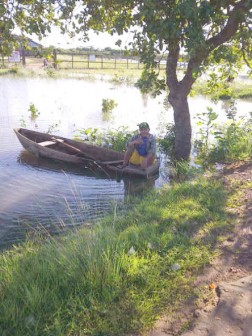
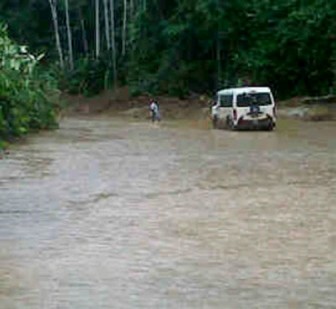
As a result, as water covered sections of the region, residents moved from the low-lying areas to higher ground. The region’s Disaster Preparedness Committee was activated yesterday in light of the rising floodwaters.
While attempts to reach Regional Chairman Wilson Larantino have been futile over the past week, Regional Councillor Carl Parker told Stabroek News last evening that several areas within Lethem have been under as much as two feet of water. As a result of the situation, he said residents have been moving their furniture and other valuables to higher ground. He said that a resident of the Tabatinga Drive area, Lorraine Thomas and her two children, ages 6 and 14, have already abandoned their home and they are currently staying at the Christian Brethren Church in Central Lethem, which was converted into a shelter yesterday.
A resident told Stabroek News yesterday that while Lethem had not experienced rainfall within the past three days, the water level was rising every two hours yesterday. ”We the residents of this area will not be waiting on them (government)… we will start our own relocation process or what have you because we can’t really do anything about the water,” the man said.
He added that residents of the neighbouring community of St Ignatius have also been on edge as the water in that community was rising throughout the day.
There were also reports yesterday that several roadways in the South Rupununi, including the road passing through the community of Jackaray, were inundated. Sections of the Georgetown/ Lethem trail, located in the North Rupununi in the savannah lands, have also been covered by water, which is said to be running down from the mountainous sections of the region.
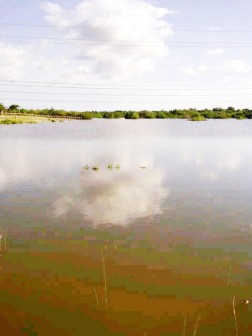
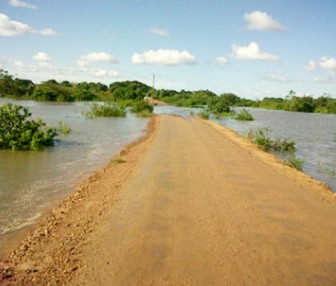
Parker noted that since February, he had been calling for the regional administration to establish a permanent disaster preparedness committee, which would have been actively making preparations for any eventualities, such as the flood now taking a toll on the region.
He said that yesterday that the committee was activated and it includes the Guyana Red Cross, the Civil Defence Commission (CDC), the army, police and other regional stakeholders.
Last week, the authorities in the neighbouring Brazilian province of Manaus declared a state of emergency as the communities there experienced the worst flooding in decades. The authorities there also indicated that the floods could have consequences on Region Nine. Reports are that sections of the roadway have washed away.
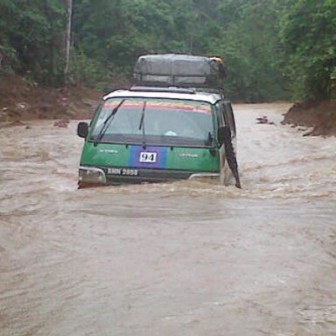
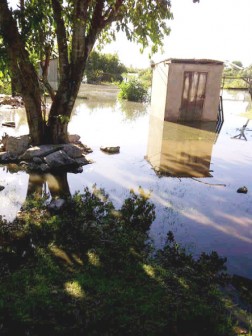
Last June, Lethem and communities within the region experienced their worst flooding in years and residents had called on the authorities to adequately address the problem, with focus being placed mainly on the relocation of key facilities as well as adequate disaster preparedness plans to prevent a recurrence.
Persons in the region had criticised the authorities over their late response to the disaster as many areas were cut off from the Central Rupununi for days.





